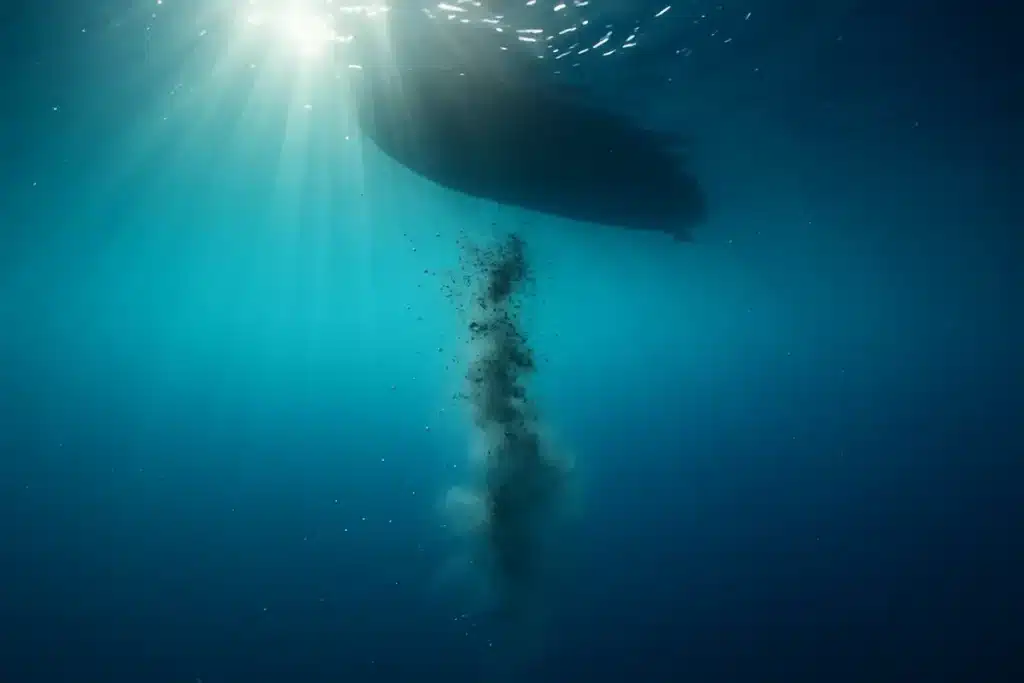Scattering a loved one’s ashes in water can be a peaceful and symbolic tribute. Whether at sea or on a tranquil lake, it’s important to understand what is legally allowed in the U.S. The Environmental Protection Agency (EPA) regulates scattering ashes in certain waters under the Clean Water Act.
Ocean Ash Scattering Rules in the U.S.
The EPA has specific rules for scattering ashes at sea. These apply when using ocean waters and include the following key points:
- The scattering must take place at least 3 nautical miles from land
This applies to all coastal regions of the U.S., including the Atlantic Ocean, Pacific Ocean, Gulf of Mexico, and Great Lakes. The minimum distance is non-negotiable under federal law. - You must notify the EPA within 30 days of scattering ashes at sea
Use the Burial at Sea Notification Form found on the EPA website. You can file this online or by mailing it to the EPA regional office closest to your scattering site. - Only biodegradable materials may be used
If you use an urn or container, it must be made of natural, biodegradable materials. Non-biodegradable items like plastic, metal, or synthetic fabric are not permitted to enter the water. - Avoid placing personal mementos or items in the water
Items that don’t break down naturally are not allowed to be left behind. The focus should remain on minimal environmental impact. - Commercial providers are available to assist
Many companies offer boat charters specifically for ash scattering and are familiar with EPA compliance.
For a broader overview of legal ash scattering locations across the U.S., including national parks and private property, refer to the guide on Where Can You Scatter Ashes in the U.S. and Canada? Funeral Homes Nearby.Funeral Homes Nearby+4Funeral Homes Nearby+4Funeral Homes Nearby+4
Scattering Ashes in Rivers, Lakes, or Inland Waters
When ashes are scattered in lakes, rivers, or other inland bodies of water, different rules apply. These situations are regulated by individual states, not the EPA.
- You must check with local or state environmental authorities
Every state has its own approach to regulating ash scattering in inland waters. Some may require a permit, and others may have location restrictions. - Some locations may ban scattering entirely or limit it to specific areas
For example, scattering in protected waterways or near public swimming areas may be restricted or prohibited. - Ask whether there is a required distance from shore or infrastructure
States may have rules similar to the federal 3-nautical-mile ocean rule, even if not as far-reaching. - Consider private landowner permission if scattering from shore
If you are on private property, the landowner must consent. You may also need a template for written permission. - Disposal of ashes must not pose a risk to water quality or health
Ashes are sterile, but dumping containers or other material may violate environmental laws if they alter water chemistry or pollute habitats.
For guidance on verifying local regulations, consult the article on How to Verify Ash Scattering Rules in Your County.
Where to Get the EPA Ash Scattering Form
The U.S. EPA provides the Burial at Sea notification form, which must be submitted within 30 days of the scattering event. You can find it here. That page also lists the regional EPA offices where you can send mailed forms, should you prefer not to complete the online submission.
Suggested Biodegradable Urns for Water Scattering
If you’re planning a sea or lake scattering, here are options for urns designed to break down in water:
These urns are designed to float briefly before sinking and dissolving naturally.
Add This to Your Checklist Before You Scatter
Before scattering ashes in any body of water, be sure you:
- Know the federal or state laws that apply in the location
- Get any needed permits or permissions
- Use only biodegradable materials
- Submit any required paperwork, such as the EPA notification form
FAQ: Scattering Ashes in U.S. Waters
Here are the most common questions about the EPA and scattering ashes and their answers:
Three nautical miles is about 3.45 regular (statute) miles. You’ll need a boat or charter that can take you this far from the coast. By speedboat or commercial charter which runs at a speed of 30+ knots, the estimated time to travel 3 nautical miles is about 4 to 6 minutes. by comparison, a slow pontoon or small fishing boat (speed: 5–10 knots) would take in the range of 18–36 minutes.
Yes, but you must check with your state’s environmental or health department first. Some lakes have restrictions or require permits
No permit is required, but you must notify the EPA within 30 days using their official form.
Only biodegradable urns are permitted for sea scattering. Avoid plastic or metal containers. See these on Amazon, or eBay.
You may be in violation of the Clean Water Act and could face fines. Always ensure you are three nautical miles or more from land
Yes, in general, scattering in the Great Lakes is allowed, but you must obtain permission if scattering from private land or docks and you must not pollute—only ashes, with no container, unless biodegradable.
If you use a biodegradable urn, it can be released into the water. Otherwise, you must take it back to shore with you and reuse it or dispose of it, if appropriate.
Only natural flowers without plastic wrappings are acceptable. Keepsakes should not be left behind in the water.
Many funeral providers or cremation companies offer services or referrals for sea scattering charters.
You can complete it online at https://www.epa.gov/ocean-dumping/burial-sea or print and mail it to your EPA regional office

